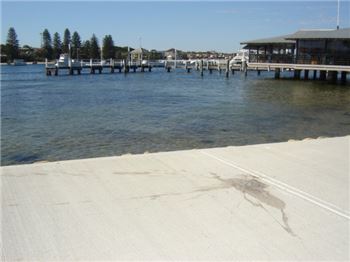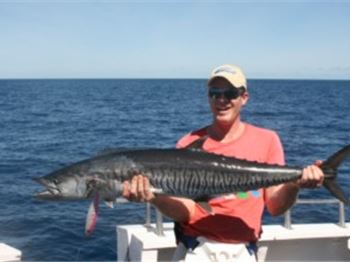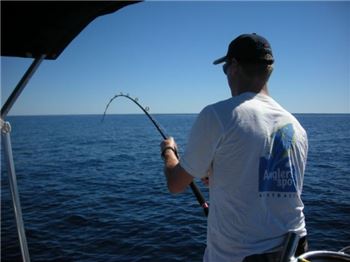QLD: Latest test results in Gladstone fish investigation
The latest test results on further marine life samples taken from Gladstone have confirmed a parasitic flatworm as the cause of cloudy eyes in barramundi, and found no parasitic, bacterial or fungal pathogens on other species tested so far.
Fisheries Queensland Habitat and Assessment General Manager John Robertson said the third interim report from Biosecurity Queensland had found the vast majority of barramundi tested so far had the previously identified parasitic flatworm.
"It is likely the skin discolouration found on these barramundi was also caused by the parasite, and we are continuing to test for that," Dr Robertson said.
"A number of other fish species were tested that had mild skin abnormalities, but tests showed this was not due to the parasitic flatworm, or any other bacterial, parasitic or fungal pathogen.
"No further cases of red spot disease have been found in testing to date. The only positive result for red spot disease has been a barramundi sample in September collected from Port Alma.
"These test results confirm Fisheries Queensland officers´ observations of a continued presence of fish with cloudy eyes and skin discolouration in the area.
"It´s important to remember that the parasitic flatworm has been seen before in Queensland, including an outbreak in the Hinchinbrook Channel in 2000.
"The parasitic flatworm is not unexpected given the major flooding events this year, which dumped an extra 300 tonnes of barramundi into Gladstone waterways.
"The physical stress of the overtopping of Awoonga Dam, combined with the stress of competition for food would have lowered the ability of fish to tolerate these parasites on their skin.
"Experience has shown when fish are in high density, the parasite is more prevalent."
Samples submitted for testing from Gladstone include more than 30 whole barramundi, tissue samples from 15 barramundi, one whole spotted cod, one spangled emperor, one whiting, one scat, one trevally, three sharks, two mudcrabs, two prawns and one Moreton Bay bug.
These samples have been from a range of locations, including the Boyne River, China Bay, South Tree Inlet, Port Alma, the Calliope River, Rat Island, Gladstone Reef, Witt Island, Hamilton Point, Tide Island, Turkey Beach and Gladstone Harbour between 30 August 2011 and 24 October 2011.
Dr Robertson said Fisheries Queensland was continuing to conduct fish sampling and testing to confirm the status of fish health in Gladstone.
"New fish sampling is targeting the Boyne River, tidal reaches of Calliope River, sites around Hamilton Point as previously sampled, and a site outside the Gladstone Harbour," Dr Robertson said.
"Fish sampling in the Boyne River on 20 and 21 October resulted in 28 barramundi being caught, with 14 fish retained for closer study, and the remainder tagged and released alive.
"Of the 14 retained fish, one had lesions, 11 fish had cloudy or red eyes and 10 fish had noticeable skin discolouration.
"Fish sampling in the Calliope River on 27 and 28 October also resulted in one barramundi and a number of bullsharks being caught.
"The barramundi had clear eyes and no parasites present, while 9 bullsharks had skin discolouration and parasites, but no cloudy eyes.
"This sampling will provide additional material for laboratory examination to better establish the link between the skin discolouration and the parasite.
"The government agencies involved in the investigation will continue to brief industry on the outcomes of test results, with the latest meeting held on Monday this week."
The biosecurity report is available at www.qld.gov.au/gladstoneharbour







